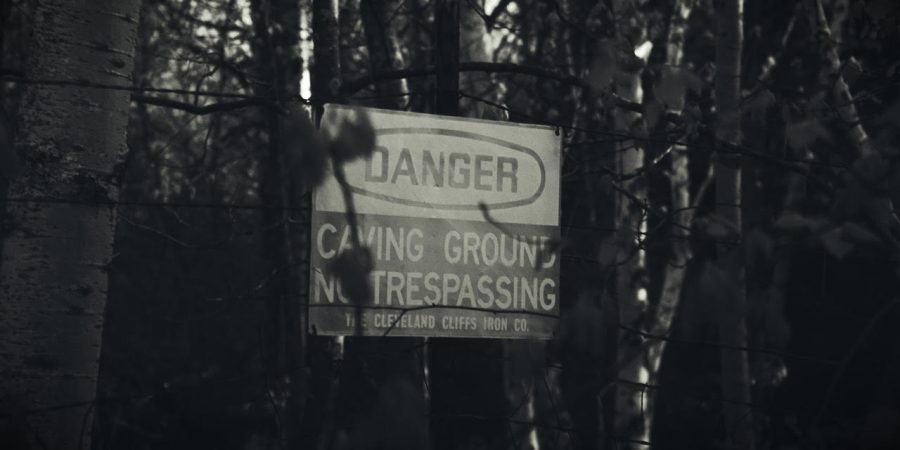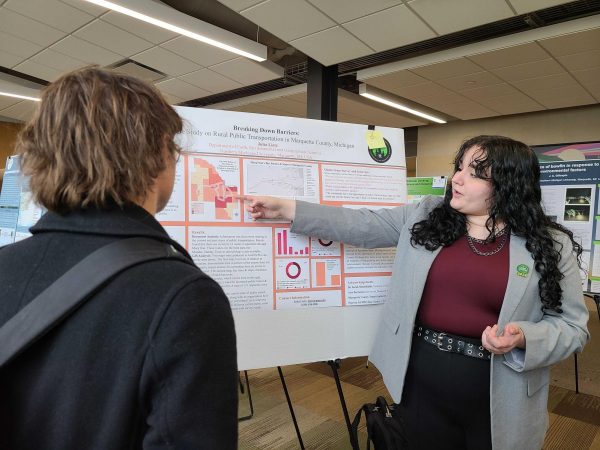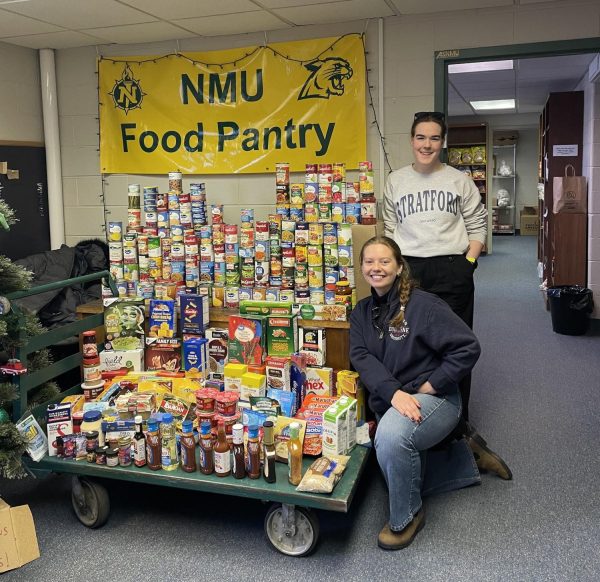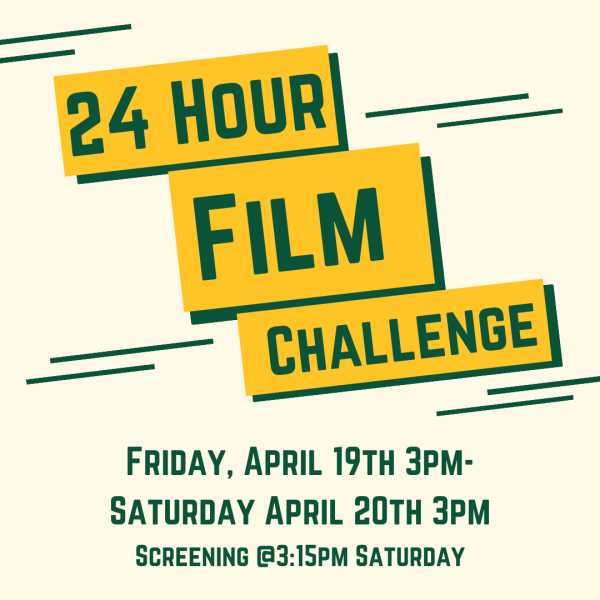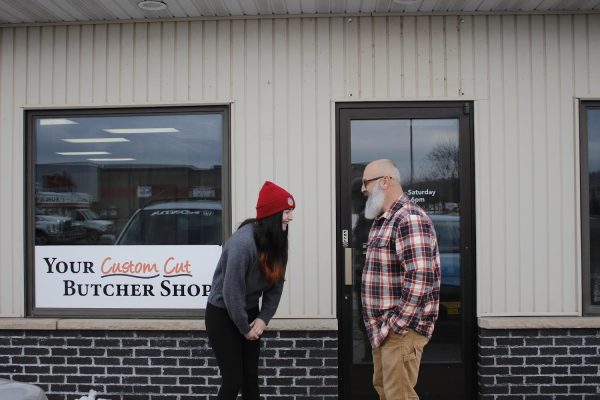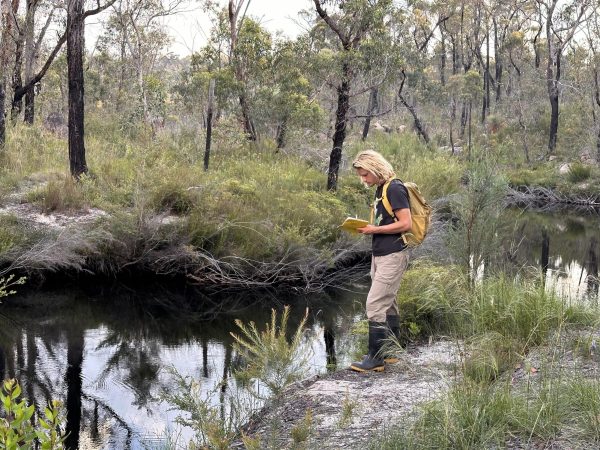Local Filmmakers Discuss Iron Town Documentary, Negaunee’s Abandoned Old Town
Photo courtesy of John Scheibe and Dan Korhonen
CAVING GROUNDS – A sign in Negaunee’s Old Town leaving a warning outside unsafe grounds. Dan Korhonen and John Scheibe spent 10 months working on “The Iron Town” their documentary focusing on Negaunee and its growth.
December 8, 2022
If you were to walk down Negaunee’s Iron Ore Heritage Trail, you’d come across Old Town, an abandoned piece of the area that has now been taken over by nature. Walking through dilapidated roads, you’ll see street signs dividing up now-defunct neighborhoods. You’ll find what were once people’s basements, no longer attached to a home, and grown over with moss and plants.
In November of 2021, Dan Korhonen and John Scheibe chose four Negaunee residents to interview about their home for “The Iron Town,” a short documentary detailing the history of the mining town.
“Negaunee is unique with the caving grounds [in] that not many towns have that,” Korhonen said. “It’s cool for people outside of the area to see that that exists, and that they can go there and explore.”
Korhonen, a Negaunee native and NMU alumni, and whose father served as town’s city manager when he was growing up, wanted to tell the town’s story after seeing a number of changes happening in his hometown. Such as the outdoor rec and trail system, as well as the introduction of a social district in the downtown area.
“When I was growing up in Negaunee, everybody in the downtown was moving out to the highway,” Korhonen said. “The grocery store closed, the hardware store closed, a lot of the buildings downtown were closing, and they were moving out to the highway where all the traffic was. And now there’s a push to move back downtown.”
He added that a park now residing where a part of Old Town used to be helps put more attention on Negaunee’s downtown.
Negaunee’s Old Town takes up a portion of Korhonen and Sheibe’s documentary, with City Manager Nate Heffron discussing its history through a recorded interview.
Korhonen notes that the opening up of Old Town is more recent than people realize; The City of Negaunee bought the land from the Mining Company and had it inspected for public use in the early 2000s. He added that both himself and interviewee Troy Henderson, a local historian, reflected on days in their youth when they’d see other children climb the fence to Old Town and explore, while they were too scared of falling in a mine pit to go in.
Korhonen and Scheibe both pointed to the passion and pride displayed by the people interviewed as a huge part of the documentary. Scheibe discussed the ways Negaunee influenced one interviewee, Mike Lempinen, and his art, and another, Carol Fulsher, and her focus on the town’s history and her certainty of the “longevity to the area” as impactful moments in the film.
“There’s been a focus on ways to grow Negaunee in different ways than it has previously,” Scheibe said, “And I think it’s sort of like Negaunee’s new modern era.”
The duo said that when they were working on the film, showing it at Marquette’s Fresh Coast Film Festival was a goal they had in mind, something Scheibe said “motivated the whole project.” They were eventually placed in the history block of the festival, alongside other documentaries sharing stories from the Upper Peninsula.
Scheibe added that even if audiences aren’t from Negaunee, there’s still a few things that they can enjoy when watching it.
“At the very least, I hope that they take away that every town has some sort of history to it,” Scheibe said. “And if it sort of turns inwards as they think more about what the history of their own hometowns are like, then I consider that a positive.”





















